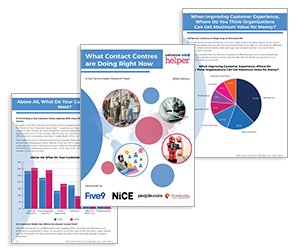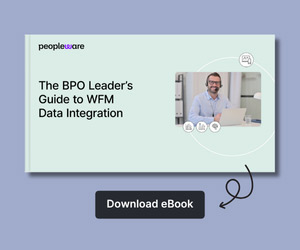Quality assurance (QA) is a vital component of running a successful contact centre, ensuring that customer interactions meet high standards and align with business objectives.
However, effective QA is about more than just checking boxes – it’s about driving real improvements in service delivery.
To find out more, we asked industry experts Daniel Ord, Katie Stabler, Justin Robbins, Nerys Corfield, Tom Vander Well, Natalie Calvert, Jason Griffin, Garry Gormley, Rob Clarke, and Dan Moross, for their favourite advice to improve quality assurance (QA) in your contact centre.
Video: 10 Experts Share Their Favourite Advice on Quality Assurance
Part One – Expert Advice on Quality Assurance
Watch the video below to hear Daniel, Katie, Justin, Nerys and Tom share their top call centre quality assurance advice:
With thanks to the following people for contributing to this video:
- Daniel Ord, OmniTouch International
- Katie Stabler, CULTIVATE Customer Experience by Design
- Justin Robbins
- Nerys Corfield, Injection Consulting
- Tom Vander Well
Part Two – Expert Advice on Quality Assurance
Watch the video below to hear Natalie, Jason, Garry, Rob, and Dan share their top call centre quality assurance advice:
With thanks to the following people for contributing to this video:
- Natalie Calvert, CX High Performance
- Jason Griffin, EMEA Principal Solution Consultant at Five9
- Garry Gormley, FAB Solutions
- Rob Clarke, Co-Founding Partner – Elev-8 Performance
- Dan Moross, MOO
10 Expert Tips for Call Centre Quality Assurance
To help you refine your QA processes, follow these ten expert-backed tips that will help you enhance quality monitoring, feedback, and coaching within your contact centre:
1. Develop a Service Delivery Vision

Select and design the performance standards that you measure agent performance against. To do this, use a “customer experience vision”.
If you do not have such a vision, your contact centre leadership will need to come up with a “service delivery vision”.
You need a vision because that will define the type of service that you deliver and, once you have this, it becomes much easier to pick what standards you want to measure.
Some people think that QA starts with selecting standards but, actually, it should start earlier. So set yourself a vision.
Contributed by: Daniel Ord
For more great advice from Daniel on contact centre QA, read our article: Call Centre Quality Assurance: How to Create an Excellent QA Programme
2. Extend QA Beyond Customer Calls

QA is about so much more than box-ticking and ensuring that agents are meeting your scorecard criteria.
Instead it should be a robust system which ensures that your entire end-to-end process runs exactly how you expect it to.
One great tool for this is retrospective customer journey mapping. This is an excellent way of ensuring that your full process is quality assured.
Contributed by: Katie Stabler
3. Develop One-to-One Relationships

Have a one-to-one relationship between the interactions that you evaluate through your QA programme and the conversations that you have around them.
Many contact centres fall into the trap of trying to evaluate as much as possible, without providing any feedback.
While they have listened and thought through lots of interactions, they have never driven any sustainable performance improvement as a result.
So really think about the relationship that exists between the interactions that you are evaluating and the resultant conversation with the agent.
Contributed by: Justin Robbins
4. Evaluate Calls in Teams

Use all the technology within your armoury to gain key QA-related insights but, at least once a month, overlay those insights with a session that involves about 12 stakeholders.
As well as the stakeholders, bring in some agents, analysts and the most senior c-suite agent that you can get your hands on.
Then, as a team, spend an hour listening to calls, asking yourself:
- If I was that customer, how would that interaction have made me feel?
- What would I do, as the customer, following that interaction?
Contributed by: Nerys Corfield
5. Research Exceptional Situations

Exceptional situations may be addressed systematically to diminish dissatisfaction. One such exceptional situation would be calls that took an extraordinary amount of time.
So, if your AHT is four minutes, take a look at 30 calls that took over ten minutes, listen to all of them and figure out why.
By doing so, you can spot some trends that could be hurting customer satisfaction and act to improve them.
Contributed by: Tom Vander Well
Tom shares even more great insights into contact centre QA in the following article: Call Centre Quality Parameters: Creating the Ideal Scorecard and Metric
6. Define and Understand Your Business Objectives

When it comes to QA, it’s good to compare the Japanese and the British models.
Typically, the Japanese spend six months sorting something out and then implement it in a day, while the British implement in a day and then spend six months sorting it out.
So my top tip for QA is to go somewhere in the middle, to do a big piece of planning upfront. You want your QA programme to align with what the business requires, not just what the call requires.
To do this, define and understand the business objectives, pull together your critical call success factors underneath that – so you fully get to grips with why you are doing QA – and then finally get your process and measures in place.
Contributed by: Natalie Calvert
7. Make Feedback Specific

In QA you have to give feedback, but it cannot be too generic because the agent won’t be able to resonate with the message.
If you only give general feedback, over time, agents will slowly switch off and they will be less likely to implement the feedback that you do give them.
Overall, QA needs to be more about improvement than punishment and more personalized than generic to promote effective change within any contact centre environment.
Contributed by: Jason Griffin
8. Calibrate Your Quality Process

Focus on the three levels of calibration.
The first level would be to calibrate what good outcomes look like for you and what you want the customer to experience.
Once you’ve defined those factors, move on to the second level of calibrating those amongst your QA team, to ensure that everyone is aligned in their understanding of what those good outcomes look like.
The final stage is to calibrate that with your frontline team so that everyone understands what is expected of them.
By going through each of these levels, you can reduce friction, build relationships and create a great QA culture.
Contributed by: Garry Gormley
Find out how you can run great calibration sessions by reading our article: How to Calibrate Quality Scores
9. Factor the Outcome Into Your Quality Scores

Focus on what matters in the customer conversation, as well as regulation and internal measures.
Take a view on the quality of a conversation – even if it deviates from the script – and really think about the end customer outcomes.
Adherence to a script or adherence to a process is one thing, but, actually, the outcome is what matters. Don’t be so structured that you miss that.
Contributed by: Rob Clarke
10. Use QA for Strength Spotting

What is paramount is asking yourself: are we delivering on our customers’ expectations? And, are we delivering a good experience?
Then, use QA to drive and improve internal processes and adoption of internal procedures, as well as then developing training for individuals and the group.
The cherry on top of the cake then is making sure to recognize and reward agents for their good performance.
QA should not only be about finding the outliers on the negative side, but also finding outliers on the positive side.
Also, trying sharing great calls with other colleagues – as an example of best practice – and giving shout-outs where you find exceptional service.
Contributed by: Dan Moross
If you are looking for more great insights from the experts, check out these next:
- Tips to Become the Best Call Centre Team Leader
- 10 Experts Tips for Employee Engagement
- 10 Expert Tips for Call Centre Metrics
- 10 Ways to Reduce AHT in the Contact Centre
Author: Robyn Coppell
Reviewed by: Jo Robinson
Published On: 4th May 2021 - Last modified: 30th May 2025
Read more about - Video, Customer Service, Dan Moross, Daniel Ord, Five9, Garry Gormley, Justin Robbins, Katie Stabler, Natalie Calvert, Nerys Corfield, Quality, Rob Clarke, Team Management, Tom Vander Well, Videos
















